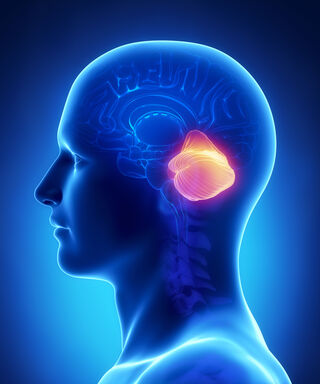Decision-Making
How the Cerebellum Optimizes Split-Second Decision Making
New research helps to explain how the brain makes lighting-fast decisions.
Posted September 20, 2020 Reviewed by Abigail Fagan

When a baseball player is up to bat and needs to make a split-second decision about whether "to swing, or not to swing" at an unpredictable curveball, there isn't enough time for intellectual or cerebral decision-making. Therefore, pro ball players inadvertently train their "little brain" to automatically make go/no-go decisions through lots of practice, practice, practice—which encodes trial-and-error associative learning.
In day-to-day life and on the playing field, mastering a wide range of unconscious, automatic skills (e.g., touch typing without looking at the keyboard, driving a stick shift, riding a bicycle, serving an ace) relies on cerebellar prowess. On and off the court, implicit learning is key to avoiding the pitfalls of "paralysis by analysis" caused by too much cerebral thinking. (See the post "Cerebellum Helps Us 'Know Without Knowing' in Sport and Life" for more.)
How Does the "Little Brain" Make Split-Second Decisions Without Overthinking?
A new study in mice has pinpointed how a previously under-investigated molecular layer of interneurons (MLIs) in the cerebellum facilitates split-second, go/no-go decisions. This paper (Ma et al., 2020) was published on Aug. 31 in Nature Communications.
In a series of elaborate experiments, scientists at the University of Colorado School of Medicine used two-photon microscopy to record cerebellar MLI neural activity as mice made reward-associated, go/no-go decisions.
"We wanted to know how this kind of decision making takes place," senior author Diego Restrepo, professor of cell and developmental biology at CU Medicine, said in a news release. "How, for example, do you decide to swing or not swing at a fastball in baseball? We found an entire subset of [cerebellar] brain cells that change after learning."
"[Our study] sheds further light on how the cerebellum functions and the complex web of connections that go into quick decision making," Restrepo added. "A lot of learning goes on inside the cerebellum. Our data indicate that the MLIs have a role in learning valence. That is, [the cerebellum] helps determine whether something is good for me or not."
The latest research suggests that cerebellar MLIs make it possible for athletes—or anyone who needs to instantly decide whether "to go, or not to go" in daily life—to automatically make lightning-fast decisions without any deliberation or hemming and hawing.
Since the 1960s, neuroscientists have known that the cerebellum coordinates fine-tuned, fluid muscle movements and that cerebellar Purkinje cells hold muscle memory. In 2005, when I wrote The Athlete's Way, I put the cerebellum and cerebellar functions in the spotlight as the key to playing sports intuitively, without overthinking or choking under pressure. (See the post "Need to Ace It? Hack Your Cerebellum and Vagus Nerve Like This.")
That said, until now, the nitty-gritty details of how the cerebellum encodes go/no-go associative learning has been enigmatic. Although neuroscientists understood that the cerebellum plays a vital role in sensorimotor and associative learning, the specific role of cerebellar MLIs in this process had gone under the radar.
The latest go/no-go study in mice shows that cerebellar MLI neurons coordinate both psychological decision-making and physical movements related to choosing whether "to go, or not to go." Interestingly, when Ma et al. used a chemogenetic agent to inhibit MLI activity, the mice became very indecisive and floundered when it came time to make split-second go/no-go decisions.
Until the late 1990s (Schmahmann, 1998), most neuroscientists mistakenly considered the cerebellum to be a non-thinking, "motor-function only" part of the brain that was key to unconsciously fine-tuning coordination and fluid movements, but little else.
Because researchers have only been actively studying non-motor cerebellar functions for about two decades, the cerebellum's role in decision-making and other cognitive functions remains mysterious and not well understood. The latest study of cerebellar MLIs in go/no-go decision-making tasks brings us one step closer to better understanding the often overlooked role the cerebellum plays in non-motor functions related to cognition.
References
Ming Ma, Gregory L. Futia, Fabio M. Simoes de Souza, Baris N. Ozbay, Isabel Llano, Emily A. Gibson & Diego Restrepo. "Molecular Layer Interneurons in the Cerebellum Encode for Valence in Associative Learning." Nature Communications (First published: August 31, 2020) DOI: 10.1038/s41467-020-18034-2


